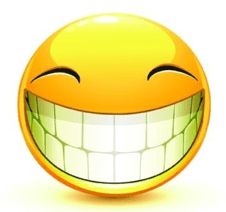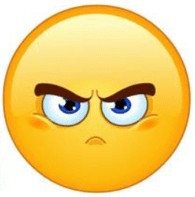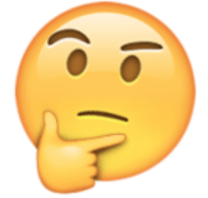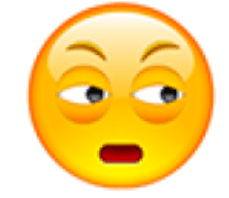The initial pitches being made by the three candidates for the leadership of New Zealand’s National party make it unlikely that we’ll see a change in government any time soon. And emojis are the reason why:
By George Hulbert, who is not a political blogger – much more interested in message:
“The race for the National leadership is turning into a race to show who can beat Jacinda Ardern, with three senior MPs throwing their hat in the ring to be the next leader. Amy Adams, Simon Bridges and Judith Collins have publicly mounted their campaigns, each pitching themselves as the only one who could drill beyond the personality of the new Prime Minister, and deliver a party with a plan in 2020.” So said Stuff.co.nz in its lead article this week, after Bill English announced that he was stepping down from the leadership of the party.
Let’s look back a decade, to when Labour lost the 2008 election. They then went through four leaders in just under nine years - Phil Goff, David Shearer, David Cunliffe and Andrew Little – before Jacinda Ardern’s appointment in August 2017 and meteoric rise to the premiership only weeks later.
Ardern’s subsequent ability to claim and occupy the ground of friendly communication - previously owned by former PM Sir John Key - and connect with people of a range of political hues, suggests that the cycle could well now repeat itself, only on the other side of the house.
When you look at the ways in which the current candidates for the top job at National are communicating - and compare them against the person they’d like to replace as Prime Minister – we ask ourselves: “who is the most relatable communicator out of this lot?” Or, as the polls ask us: who is your preferred Prime Minister?
Emojis give us a clue
In this day and age of social media-dominated communication, when engagement is the holy grail, emojis run the show and media feel obliged to tell us how long articles are going to take to read, looking at the candidates through emojis can give us voters a clue of how they might go. Not exactly scientific stuff, but relevant nonetheless.
First, let’s start with our Prime Minister: Jacinda Ardern is the epitome of an emoji – you know, the smiley, toothy, happy, engaging, friendly emoji that you use most often when you love something on Facebook.
Incredibly approachable, open and more keen to explain her thought processes, she comes across as a very credible and honest communicator. Yes she is most definitely still in the honeymoon of her Prime Minster-ship, and the media just cannot express their love loudly enough - for now - but she is a formidable communicator who occupies a clear place in our minds.
So, by comparison, what emojis might we use to convey the feel and messages that National is sending through the candidates who have emerged for the leadership so far?
Judith Collins – announced her candidacy first, which is always a good move. However, the first emoji in people’s heads when they think of her is most likely to be one that conveys quietly seething rage: ‘Crusher’ Collins doing her best to seem friendly and approachable, while - one feels - quietly grinding her teeth and thinking about going home to sharpen a large selection of knives. With purpose.
Simon Bridges – so earnest it isn’t true, but have you ever seen him smile? It is not easy to find an emoji that represents him, largely because emojis convey emotion, funnily enough, and there seems to be very little of that emanating from him. Corporate emoji; suit and tie emoji; grey emoji; what emoji?
Go on, you see what you get when you type ‘earnest emoji’ into Google. Not a lot, that’s what.
Amy Adams – another from the earnest emoji box: serious. Positioning herself in front of a group of four supportive MPs including Nikki Kaye (smiley emoji) was a clever move to show support, but to me all it also showed us the contrast between her serious (and, I’m sorry to say it, rather tired-looking) emoji face, her more lively supporters - and the energetic and engaged face of our Prime Minister.
The difficulty I had in finding emojis for these last two highlights their problem clearly. Who are they? What do they stand for? What do they offer us? What emotion do they conjure up in us? If we cannot place them as simply and quickly as through an emoji, how on earth do they expect us to vote for them?
Yes, the contest they are currently engaged in doesn’t necessarily have us voters at the front of mind right now: but it will do all too soon, when the next election comes around in 2020. And yes, aiming to become the leader of a major political party and thus the leader of the Opposition is a serious business.
But in this day and age, we need more than that: sadly, we have to make instant judgements because we have become conditioned by the pace of technology to have instant views and feelings about things, with little analysis and penetrative consideration. So, driven by the pushy insistence of social media platforms, we naturally respond better to a human, friendly approach.
It is interesting therefore that some of National’s friendlier faces - such as Paula Bennett and Nikki Kaye - are not further to the fore at this point.
And, when you think back to Labour’s recent years in opposition, their leaders Phil Goff (smug emoji), David Shearer (bland emoji), David Cunliffe (SMUG emoji x3), Andrew Little (depressed emoji), all we could think of was emojis at the wrong end of the spectrum.
Jacinda changed that. Which is why, unless National can find a new wave of talent that can communicate better, they will be doomed to political darkness for the foreseeable future.
Insert emoji here:





